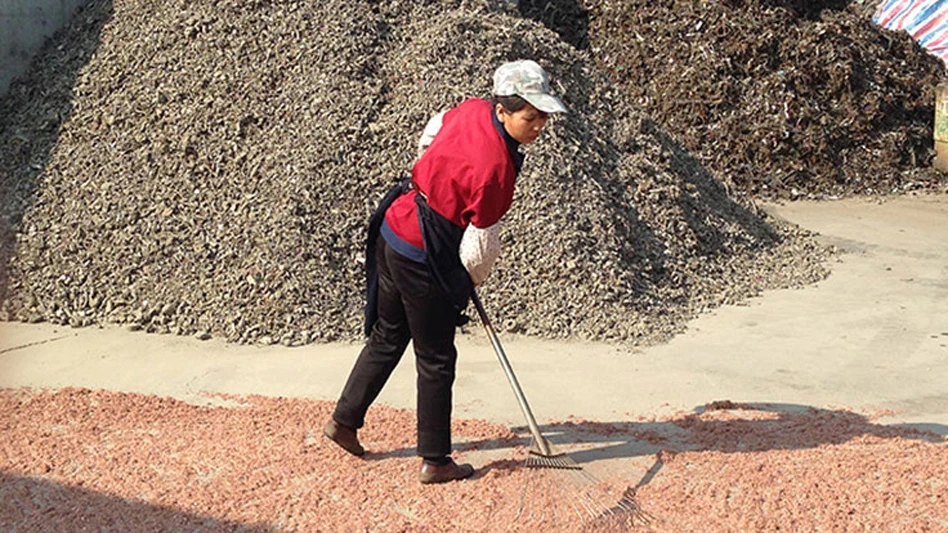
Recycling Today archives
Calling copper “one of the most crucial minerals needed to drive the clean energy transition,” the multinational World Resources Institute (WRI) has published a nearly 2,000-word report outlining the current red metal recycling landscape and offering recommendations to boost copper’s circularity.
The WRI, which has a U.S. office in Washington, has a global staff of nearly 2,000 people dedicated to conducting research to “fundamentally transform the way the world produces and uses food and energy and designs its cities to create a better future for all.”
The organization says the ongoing energy transition could push copper demand beyond current production capacity, noting one way to overcome the challenge is by recycling.
“Power systems supported by renewable energy sources may use six to 12 times more copper than a fossil-fuel-based power system,” Xixi Chen and Ke Wang of the WRI say of the demand side. “Copper is also necessary for electric vehicles (EVs), which require at least two to three times more copper than traditional gas vehicles."
The duo says copper produced from recycled materials can save up to 85 percent of the energy needed compared with mining and extraction, citing the Washington-based International Copper Association.
In North America and Europe, copper recycling largely has been carried out as a private-sector endeavor. The material’s recycling value can be considered well-understood, including by some members of the public who will steal it for its recycling value, unfortunately.
The researchers, however, focus on government initiatives to boost copper recycling, including the European Union’s End-of-Life Vehicles Directive and the establishment of the state-affiliated China Resource Recycling Group in China.
Chen and Wang cite the obsolete electronics stream as one from which more recyclable red metal could be sourced and as being worthy of attention.
“The greatest recycling opportunities will come from products at their end of life like electronic waste (or e-waste), which is the world’s fastest-growing waste stream at 62 million tons a year,” they write, citing a United Nations study.
The researchers also refer to the disparity between where red metal scrap is generated and collected (with the U.S. and Europe as leading regions) and where it is melted and refined, with China and other nations in Asia dominating.
The WRI hints that shortening these recycling loops could increase the end-of-life copper recycling rate in an environmentally and socially responsible way.
“Governments and the private sector must collaborate on policy frameworks and incentives to help accelerate and expand [refining] capacity with high technical, environmental and social standards, especially for lower-grade copper [scrap]," WRI says.
Another of the institute’s recommendations could raise eyebrows in the established red metals recycling sector, where the pursuit of copper for recycling has deep roots.
In nations where copper is being stolen to be sold into the recycling chain while it is still in use, putting government resources into collection could seem unnecessary.
But the WRI researchers advocate such an approach.
“Consumer groups, brands, retailers, logistics companies, municipalities and NGOs [nongovernmental organizations] need to work together to raise public awareness and develop effective take-back/bring-back systems to increase the collection of end-of-life products," Chen and Wang say. "Public authorities and standardization organizations can seek transportation solutions for collected feedstock for recycling.”
The third WRI recommendation involves working with fabricators and manufacturers that use copper to convince them they can include more recycled content in their products.
“Copper recyclers, semifabricators and end-use industries need to work together to increase awareness of the benefits of using recycled copper and to understand and align on purity needs to unlock market potential for recycled copper from end-of-life scrap,” they write.
Latest from Recycling Today
- Phoenix Technologies closes Ohio rPET facility
- EPA selects 2 governments in Pennsylvania to receive recycling, waste grants
- NWRA Florida Chapter announces 2025 Legislative Champion Awards
- Goldman Sachs Research: Copper prices to decline in 2026
- Tomra opens London RVM showroom
- Ball Corp. makes European investment
- Harbor Logistics adds business development executive
- Emerald Packaging replaces more than 1M pounds of virgin plastic





